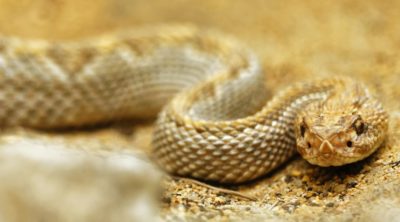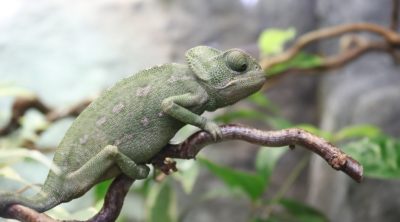
If you have a pet leopard gecko, it is important that you understand about the typical life span of these reptiles, and the role that proper care can play in prolonging it. In this PetPonder article, we shall elaborate further on this topic.
Leopard geckos (genus Eublepharis) are lizards native to the dry and rocky terrains of Pakistan, India, and Afghanistan. While their natural geographical range may not be vast, they are quite popular as pets in many parts of the world.
The average life span of a leopard gecko depends on the environment in which it is made to live. As the species is native to the arid regions of Asia, providing the same kind of environment at home is of primary importance in order to help it live as long as possible.
It is found that their average life span ranges between 10-20 years. In the wild, leopard geckos can live as long as 20 years. On the other hand, with proper care, in captivity they usually have a life-expectancy of 15-20 years. In rare cases, some leopard geckos have even been rumored to have lived up to 30 years in captivity.
Proper Care
The size of a gecko can range from an adult size of 0.75 inch, in case of the dwarf gecko, to 14 inches, in case of the Tokay gecko. The average adult size of these lizards is 8-10 inches.
A ten gallon tank can be used to house a pair, that is, a male and a female leopard gecko. As they are highly territorial in nature, putting two males in one tank can lead to a territorial war and therefore is best avoided. Use shifting and washed play-sand, as the cage substrate for your gecko tank. If you are preparing the tank for the hatchling of a leopard gecko, instead of using sand or wood shavings, use paper as the substrate.
Using a thermostat controlled heater can help you maintain the correct required temperature, which is somewhere between 29°C – 31°C in the daytime, and 22°C – 25°C at night. Leopard geckos are nocturnal lizards and do not require UV light however small exposure to it might be help in simulating natural conditions. You can use a 40-60 watt or an infrared bulb, fixed at one end of the gecko tank, as an alternative to an electrical heater, can provide adequate heat along with light.
In order to regulate their body temperature, the Leopard geckos shift from hot area to cold area, and vice versa. Placing the light bulb at one end of the tank can help you with this by creating a proper thermal gradient inside the gecko tank. Do note that failure in maintaining the proper range of temperature could definitely have an effect on its life span, and hence should be given priority.
Do remember to provide the gecko a nice and dark hiding place such as a small cardboard box. Make a hole at the top of the box through which your pet can enter and hide. Add sand in the box and sprinkle some water over it to provide a moist environment which helps a gecko in shedding its skin. This too is an important factor in gecko-care as improperly shed skin can cause problems to a pet gecko.
Health Problems
The Leopard Gecko is a tough lizard and if it is properly cared for, is resilient to most health problems. However, there are a few deficiencies and diseases which might afflict it.
Commonly deficiency of vitamins and metabolic bone disease may affect your pet gecko. It may also suffer from problems such as loss of tail, rotting of mouth, egg-binding and sand impaction. You may also have to consult a vet to diagnose and treat your pet gecko for respiratory diseases, anorexia, gastroenteritis, diarrhea and problems typically experienced during shedding of the skin.
Food
The leopard gecko is an insectivorous lizard. A wild leopard gecko eats whatever insects it could lay its hands on, such as fruit-flies, meal-worms, crickets and small cockroaches. To the baby gecko, you can feed small meal-worms and crickets in small amounts. You should take care of lacing your pet foods with calcium supplements in powdered or liquid form. Both the hatchlings and adults, shed their skin once a month and eat it. This should not be obstructed, as the gecko skin is nutritious, and supplements vitamins which are important for them. Don’t discard it as waste while cleaning up the gecko tank.
Thus, in conclusion, taking proper care, providing healthy nutrition, and maintaining a clean and conducive environment are the key factors which can help in maximizing the life span of your pet leopard gecko.

